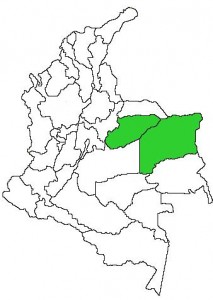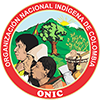Amorúa

OTHER NAMES:
Wipiwe, Siripu, Mariposa (Butterfly)
GEOGRAPHICAL LOCATION:
They are located in the municipality of Paz de Ariporo, Casanare, in the town of El Merey-La Guagilla. There is also a population settlement known locally as Amorúa in the town of La Esmeralda on the Aguaclara stream, a tributary of the Casanare River. There are another, of about fifteen houses, in a point near the El Porvenir herd, approximately three hours of navigation on the Meta River, who work as laborers on the farms and funds and plant cotton by contract. Other settlements are in the La Arenosa, Lithuania, Tierra Macha and Los Mochuelos reserve. The Amorúa coexist with Guahibo-Sikuani in the current Guáripa-La Hormiga reserve, in Vichada. Apparently there is more than twice the population of Amorúa than exists in El Porvenir
POPULATION:
The estimated population is 178 people, spread over a perimeter of 94,670 hectares, which are part of the Caño Mochuelo shelter.
LANGUAGE:
The group known as Amorúa or Hamorúa belongs to the Guahíbo language family. Guahibo Sikuani.
CULTURE:
Its representation system has in the figure of the Shaman the main character of the ritual and spiritual life of the ethnic group. From that perspective, the Yopo is the main psychotropic plant, fundamental in the performance of any ceremony or ritual, although it is also used in social activities. The Yopo consumption, during ceremonies, is accompanied by the consumption of tobacco and other hallucinogenic plants.
Among the most important rituals that undoubtedly mark the life cycle of the ethnic group are:
- The "fish prayer", initiation and christening ceremony, which is widely distributed among the groups in the region. Its general sense is to prepare the young woman for adult life.
The “Itomo”, which is part of the cycle of ceremonies of the second interment. It is one of the main rituals, even above the ritual of the first ceremony, where the burial is simple and only the Shaman intervenes. The ritual allows the presence of the deceased to be perpetuated and becomes an important social activity.
SOCIOPOLITICAL ORGANIZATION:
In Amorúa groups, a type of family organization based on the father-in-law's authority prevails. The production and consumption unit and the residential unit are generally made up of an adult couple, young sons and daughters and married daughters, with their respective families. With the growth of the group, the sons-in-law tend to build separate houses.
They have a system of dravidic kinship, where they classify the members of the community, and in general of the ethnic group, into two fundamental categories: that of direct blood relatives such as parents, brothers and children, as well as uncles, brothers of the same sex that the parents, brother of the father and sister of the mother and whose denominations can be translated as "father" and "mother", respectively; parallel cousins, children of the father's brothers and mother's sisters, are assimilated to the brothers, and the nephews and nieces of the brothers, are associated with their own children.
In the category of allies the brothers of the mother and sisters of the father are considered, who are both in-laws and mother-in-law, since they are the parents of the crossed cousins or virtual husbands and wives. In the lower generation, the children of the sister for a masculine ego, and the children of the brother for a feminine ego are considered as sons-in-law and daughters-in-law who are already effectively marrying the children of ego.
ECONOMY:
Cassava as the main crop, characterizes the horticulture of Amorúa groups. Bitter cassava varieties are planted intercalated up to a dozen per chagra, to achieve greater and longer production in the field. Bananas are planted in lowland areas and in humid areas. Pineapple, beans, sweet potatoes and yams are grown in small areas next to the Cassava crops, while fruit, such as guama, mango, papaya, citrus, condiments and medicinal plants are sown near the houses. For the elaboration of the alcoholic beverage, Yalaki, made from bitter cassava, an additional cassava crop is sown.
The preparation of new land (activity that takes place in” December), and sometimes planting, is carried out through the treat or “unuma, convened by the head of the settlement. The sowing takes place in the days before the first rains.
After about eight months of planting the cassava crops, production is continuous, and since each family has several conucos in different stages of development, family needs are widely met.
Sources:
-Arango y Sánchez. Los pueblos indígenas de Colombia 1997.
-Dane: censo 1993 -Proyección 2001-.
-Romero, María Eugenia. “Amorúa, Wiipiwe, Siripu y Mariposo“, en: Geografía Humana de Colombia, Región de la Orinoquia, Tomo, Vol.1, Instituto Colombiano de Cultura Hispánica, Santa Fe de Bogotá,1993.
-Fundación Hemera – Etnias de Colombia
-Los Pueblos Indígenas de Colombia en el umbral del Nuevo milenio – DNP – Departamento Nacional de Planeación
-Recuperado de: TodaColombiaPuebloAMORUA
-PNUD - UNICEF. Abril de 2009. Boletín Hecho del Callejón #45.
-Instituto Colombiano de cultura Hispánica. Geográfía Humana de Colombia. Región Orinoquia Tomo III Volumen I Amorúa



